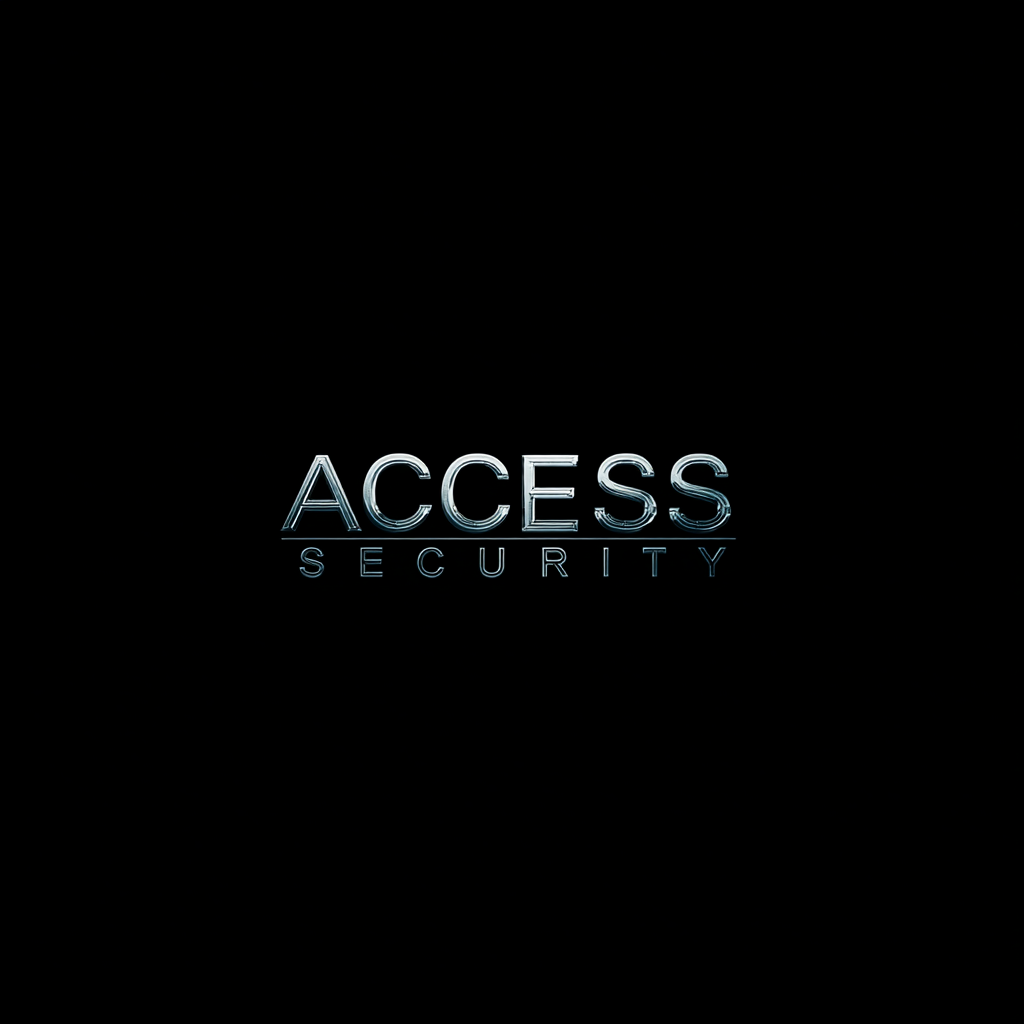Comprehensive Solutions for Access Security Needs Around the Globe
In an increasingly interconnected world, the importance of Access Security cannot be overstated. According to the latest report by MarketsandMarkets, the global market for access control systems is projected to reach $10.28 billion by 2025, growing at a compound annual growth rate (CAGR) of 7.5% from 2020. This growth is driven by the rising need for advanced security solutions in various sectors, including residential, commercial, and industrial domains. As companies and governments strive to protect sensitive information and safeguard physical spaces, the demand for comprehensive solutions tailored to diverse Access Security needs has never been more critical. 精工细造,中国制造,服务世界 encapsulates the essence of this endeavor, highlighting the precision of Chinese manufacturing in delivering world-class security solutions that cater to the global market.

Challenges Faced in Global Access Security Implementation
 In today's interconnected world, the implementation of access security solutions presents a multitude of challenges that vary greatly across geographic and cultural landscapes. One of the primary hurdles is the diversity in regulatory requirements, which can differ significantly from one country to another. Organizations must navigate these complex regulations while ensuring their security measures are effective and compliant. This often involves a lengthy process of research and adaptation, as a solution that works in one region may not align with the legal expectations of another.
In today's interconnected world, the implementation of access security solutions presents a multitude of challenges that vary greatly across geographic and cultural landscapes. One of the primary hurdles is the diversity in regulatory requirements, which can differ significantly from one country to another. Organizations must navigate these complex regulations while ensuring their security measures are effective and compliant. This often involves a lengthy process of research and adaptation, as a solution that works in one region may not align with the legal expectations of another.
Additionally, the integration of access security technologies with existing systems poses a significant challenge. Many organizations operate a mix of legacy and modern systems, making it difficult to implement new solutions without disrupting workflows. Overcoming resistance to change among employees is another critical aspect, as staff may be hesitant to adopt new processes or technologies. Ensuring proper training and support during the transition phase is essential to alleviate these concerns and foster an environment of cooperation. Addressing these challenges head-on is crucial for organizations seeking to bolster their security frameworks effectively and sustainably in a global context.
The Impact of Technology on Access Security Solutions
In today's rapidly evolving landscape, technology plays a pivotal role in reshaping access security solutions. The integration of advanced technologies such as biometrics, artificial intelligence, and cloud computing has transformed traditional security systems into highly sophisticated frameworks. With biometric systems, for example, organizations can enhance authentication processes by utilizing unique physical characteristics, thereby reducing the chances of unauthorized access. This reliance on technology not only improves security but also streamlines operations, allowing businesses to manage access control efficiently.

Moreover, the advent of the Internet of Things (IoT) has further revolutionized access security. Smart devices enable real-time monitoring and control, providing organizations with valuable insights into security dynamics. As data flows seamlessly between connected devices, security personnel can respond swiftly to potential threats, creating a proactive security environment. The impact of technology extends beyond efficiency; it fosters a culture of safety and trust, ensuring that both employees and customers feel secure within physical premises. With these advancements, access security is no longer a reactive measure but a comprehensive, forward-thinking strategy essential for modern enterprises.
Analyzing Common Access Security Vulnerabilities Worldwide
Access security vulnerabilities are a critical concern for organizations worldwide, as they can lead to data breaches and unauthorized access. One common vulnerability is weak password management, where users create easily guessable passwords or fail to change them regularly. This leaves doors wide open for cybercriminals. Organizations should implement strong password policies and encourage the use of password managers to enhance security.
Another prevalent issue is the lack of multi-factor authentication (MFA) in access control systems. Many organizations still rely solely on username and password combinations, making them susceptible to phishing attacks and credential theft. By integrating MFA, companies can significantly reduce their risk, ensuring that even if passwords are compromised, unauthorized access is thwarted.
Regular security audits and training programs are essential in identifying and mitigating access vulnerabilities. Employees must be educated about the various threats and safe practices. Implementing access control best practices, such as role-based access control and regular reviews of user permissions, can help mitigate potential risks and enhance overall security posture.
Best Practices for Enhancing Access Security Systems
As organizations worldwide prioritize strengthening their access security systems, implementing best practices has become vital. According to a report by Gartner, 75% of security breaches occur due to improper access management. This alarming statistic emphasizes the need for robust identity and access management (IAM) strategies that not only safeguard sensitive data but also enhance user experiences.
Effective measures such as multi-factor authentication (MFA) have proven significant in mitigating risks. A study by the Cybersecurity & Infrastructure Security Agency (CISA) found that MFA can block up to 99.9% of automated attacks. Additionally, regular access reviews and privileged account management are crucial for maintaining stringent control over who has access to critical systems and data. Organizations that adopt these practices are better positioned to protect against unauthorized access and reduce potential vulnerabilities within their infrastructure.
Investing in advanced access control technologies, like biometric systems and AI-driven analytics, can further elevate security standards. A recent survey by Forrester Research indicated that companies utilizing these technologies experienced a 30% decrease in security incidents. By focusing on these best practices, organizations around the globe can effectively enhance their access security systems and better protect their valuable digital assets.
Comprehensive Solutions for Access Security Needs Around the Globe - Best Practices for Enhancing Access Security Systems
| Access Control Method | Effectiveness Rating | Implementation Cost ($) | Maintenance Frequency | User Satisfaction (%) |
|---|---|---|---|---|
| Biometric Systems | 95 | 5,000 | Annual | 90 |
| Keycard Systems | 85 | 2,000 | Monthly | 75 |
| Mobile Access Control | 90 | 3,500 | Semi-Annual | 85 |
| Facial Recognition | 92 | 6,000 | Annual | 88 |
| Intercom Systems | 80 | 1,500 | Quarterly | 70 |
Future Trends in Access Security and Emerging Solutions
As we look to the future of access security, several emerging trends are poised to reshape the landscape. One of the most significant shifts is the transition towards cloud-based Hardware Security Modules (HSMs). Unlike traditional on-premises solutions, cloud-based HSMs offer greater flexibility, scalability, and cost-effectiveness, making them an attractive option for organizations seeking robust security without the heavy capital expenditure associated with physical hardware. This shift reflects broader industry demands for adaptable security practices that can evolve with technological advancements.
Another pivotal trend is the integration of zero-trust security models, particularly in the context of increasing digital transformation. As businesses navigate complex IT environments, the traditional perimeter-based security approach is fading. Instead, organizations are embracing zero-trust architectures that continuously verify users and devices, regardless of their location. This evolution is critical as it ensures that sensitive data remains protected even as threats become more sophisticated. Furthermore, as the need for comprehensive data governance becomes paramount, organizations will need to adopt proactive data management strategies to safeguard their most valuable assets while complying with regulatory requirements.
Future Trends in Access Security
- • HighpowerOne Touchscreen Controller • HighpowerOne Mobile Credential App
- Highpower Management System
- • Pushplate 100 PNZ
- • Pushplate 110 PNZ
- • Pushplate 120/140 PNZ
- • Pushplate 130/150 PNZ
- • Pushplate 200 PNZ
- • Pushplate 100
- • Pushplate 110
- • Pushplate 120/140
- • Pushplate 130/150
- • Pushplate 200
Mechanical Timers
Proximity ID Access Cards and Fobs
Proximity Card Readers
- • Proximity Reader P-300
- • Proximity Reader P-400
- • Proximity Reader P-500
- • Proximity Reader P-620
- • Proximity Reader P-640
- • Proximity Reader P-710
- • Proximity Reader P-900
- • Ranger Proximity Readers
- • Ranger Controls
- • Sure-Fi Wireless Interfaces
Smart Series JX Readers
Electromagnetic Locks
Highpower Power Supplies
• H505
• H512
Security Products Summary
